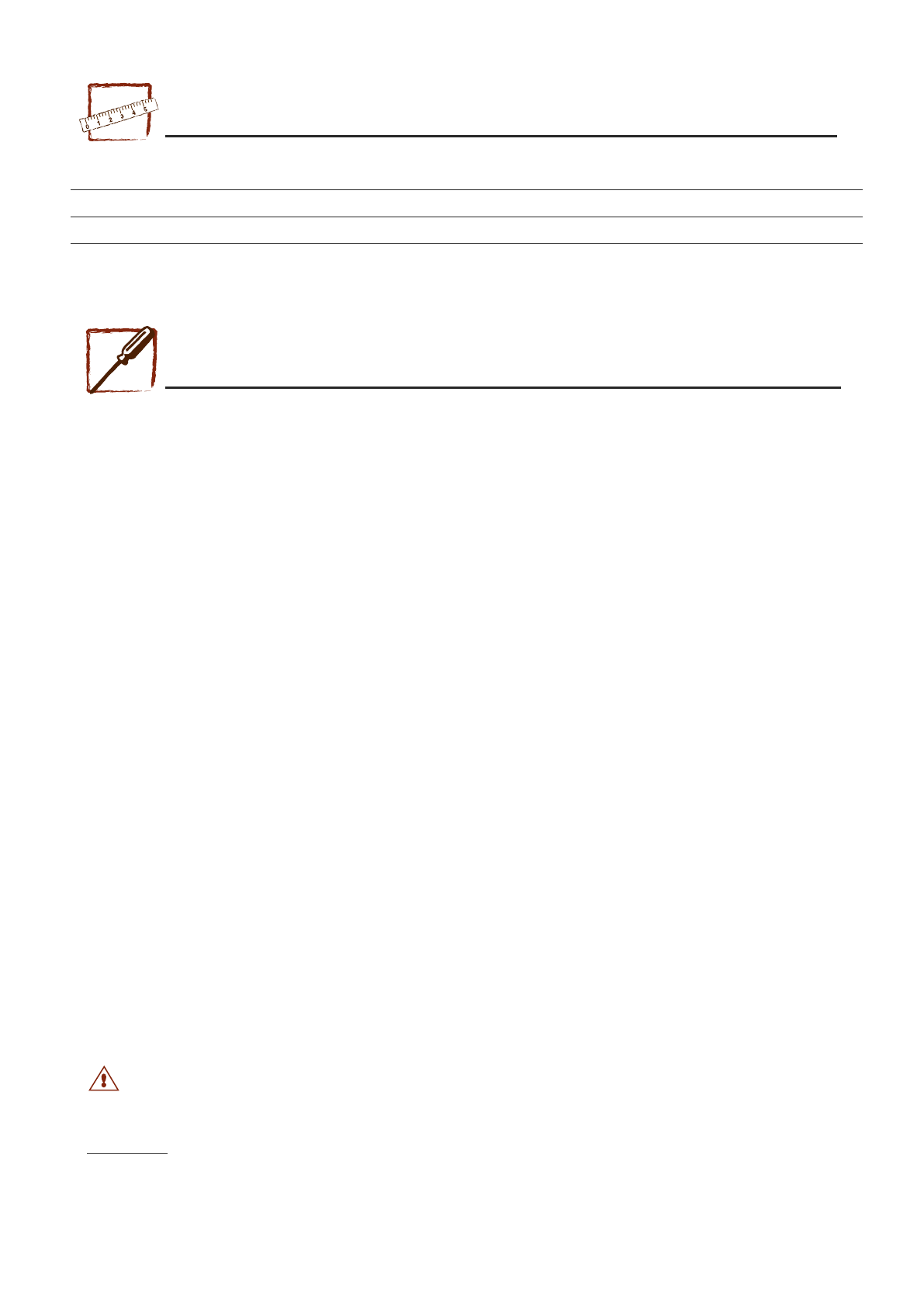
2 - TECHNICAL SPECIFICATIONS
3 - CELLAR INSULATION
Dimensions Power Sample Cooling Weight Electrical Heating Refrigerant External
in mm supply volume m
3
serutarepmetW ecnatsiserW rewopgKW yticapac
Inoa 25 W385 x D322 230 V up to 600 W** 43 Kg 550 W** 650 W R134a -5°C to 35°C
x H1250 / 50 Hz 25 m
3
* (without CFCs)
Inoa 50 W385 x D322 230 V up to 1200 W** 46 Kg 800 W** 650 W R134a -5°C to 35°C
x H1250 / 50 Hz 50 m
3
* (without CFCs)
* in a very well insulated room - ** for an internal temperature of 12° C and an external temperature of 32° C.
Supplied with a 3.50 m power lead without plug.
Traditional building materials such as stone, concrete and brick are very poor insulators and only underground sections represent any real insulation.
It is therefore essential, in the majority of cases, to insulate the entire room to be conditioned.
Insulate – yes but how?
We recommend that you use extruded polystyrene, currently the most ecient product on the market. It is the least ammable and the most durable
material.It also has the advantage of not being attacked by rodents.Furthermore,extruded polystyrene boards can be layered and therefore prevent thermal
bridges.To increase your conditioner’s lifespan and reduce electricity consumption, we recommend that you use extruded polystyrene which is at least 80
mm thick.
80 mm of extruded polystyrene provides the same amount of insulation as a 5m thick stone wall.
The insulation must be completely continuous (no gaps).
Insulation boards: dierent methods of tting are possible
How can you determine whether or not a material is a good insulator? The insulation performance of a material is established by its R thermal resistance
(m2.°C/W). It determines the material’s ability to conduct heat.
R = e/λ - The greater the R coecient, the better the insulation. (λ = thermal conductivity coecient)
There are 3 types of insulation boards:
Insulator only, complex (with plaster cover) or sandwich (plaster both sides)
Depending on the type of insulator chosen, several methods of tting are possible:
• Against the walls
- Standard extruded polystyrene board:pre-cut to the dimensions of the area to be conditioned,they are tted using high-bond mortar.For a more acceptable
nish, it is possible to x rails onto which you screw the plaster board panels over the polystyrene.
- Sandwich or complex boards: the polystyrene is already integrated into the plaster board.
Whatever the method used, all kinds of decorative nishes are possible to obtain an attractive wall.
If you
only
want to condition a section of your room, install a plaster board dividing wall then insulate the side of the room to be conditioned.
N.B.: Before being insulated,walls must be clean. If they are too damp, clean them with a wire brush then clean with a high pressure water jet and paint with
an emulsion paint.
• On the ceiling and door
The process for insulating the ceiling and door is identical to that of the walls.We recommend that you use extruded polystyrene.
• On the floor (insulation optional)
- Original clay oor: not insulating favours the passage of humidity, which is good for the wine.
- Concrete oor (for example): Concrete is a very poor insulator.A few centimetres of ne gravel can, in some cases, improve insulation.
It is essential that the surface material used for the oor (whether or not covering
insulation) can support the weight of wine racks and has resistance to compression.
Tools required
- handsaw, tape measure, bricklayer’s ruler,trestles, screwdriver or screw gun, drill,hammer, level, plumb line, wood mallet, spatula, precision knife...
8


















